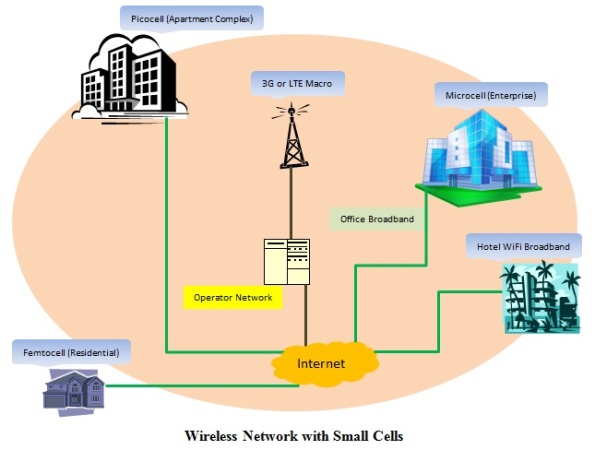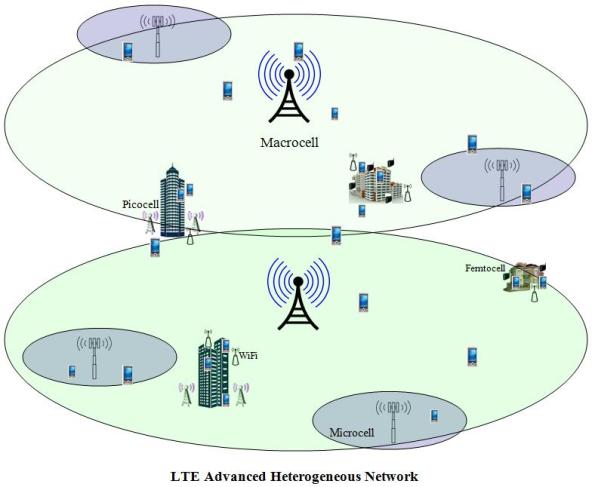Archive
Are HetNets the solution for data hogging wireless networks?
In wireless communications, Heterogeneous Network or HetNet is a system comprising of wireless networks of different cell sizes with varying output power, various radio access technologies and multiple architectures. The primary objectives of a HetNet are achieving greater coverage and higher capacity while offering seamless handoff and connectivity. Data traffic has shown exponential growth and every operator is looking for a cost-effective, spectrally efficient solution to offer higher data rates. Poor coverage and blind spots have long challenged the wireless industry. The top approach to solve these issues is the upgradation of radio access technology at the macrocell sites. LTE is considered a very efficient radio technology and provides users with data access generally in the range of 5 to 25 Mbps (depending on the service provider and environment) while reducing the cost per bit for the service provider. More spectrum and multiple antennas are also popular options to increase the data rate. Increasing the number of cell sites in a given area is another proven method of augmenting network performance in high traffic urban areas. Imagine these scenarios and add low power picocells and femtocells. Finally append a WiFi network to this environment and the resulting system would be a multilayer large capacity heterogeneous network. The varying power levels and multiple cell sizes make this network heterogeneous. It effectively brings the network closer to the customer.
Let us discuss the various cell types in a HetNet. Macrocells are the common cells sites supporting technologies like HSPA+ and LTE. The normal range may vary from a few hundred meters to a few kilometers. Output power is of the order of tens of watts. A microcell typically covers a smaller area maybe up to a kilometer. They usually transmit within a range of milliwatts to a few watts. Microcells are deployed for providing temporary cellular coverage and capacity in sports stadiums, convention centers etc. Sometimes, microcells may use distributed antenna systems (DAS) to improve bandwidth and reliability. Picocells are generally deployed by the network operator within limited indoor areas such as office buildings and shopping malls. Femtocells cover an even smaller space like a house or small business. They are sold by the operator but self-installed by the customer. Some femtocells may be autonomous implying that they have the ability to determine the best frequency and power levels to operate.
Two arguments in favor of small cells are the reduced capital and operational expenditure (CAPEX and OPEX) as compared to techniques like cell splitting and ability of small cells to provide adequate coverage in extremely densely populated areas. The idea of merging small cells with the macrocell network has the advantage of offloading traffic from the bigger cell sites to the smaller cells. This permits the macrocells to operate at their normal capacity. Such consolidation is transparent to the customer. It involves seamless handoff between the multiple sized cells and facilitates uninterrupted data services for the user. A key component of HetNet which will help in meeting the above requirements is network intelligence. Macro, micro, pico and femtocells along with Wi-Fi have to be integrated into a single framework in a manner which avoids interference. As far as frequencies are concerned, all cells in heterogeneous network need not be using the same spectrum. Macrocells can operate at a lower frequency to boost penetration. Higher bandwidth (bits/Hz) is desired for smaller cells, so it would be best to allocate higher frequencies to such cells. The figure below shows an example of a HetNet in a LTE-Advanced Network. Note that femtocells are indoors, but are shown around the building in this diagram for depiction purposes.
HetNets, like all other wireless networks face some challenges. In order to raise the spectral efficiency, minimizing harmful interference between the neighboring cells is necessary. In the 3GPP Release 10 for LTE Advanced technology, a procedure called Enhanced Inter-Cell Interference Coordination (eICIC) has been defined to mitigate interference. EICIC uses time domain to avoid interference between the macrocell and small (micro, pico) cells in a heterogeneous network. In this technique, some subframes which are sent out by the macrocell are blanked out. These blank subframes do not contain any data. They are low power control channels. Once such blank frames are configured by the macrocell, the users connected to a small cell can send and receive data during such subframes, thus minimizing interference from the macrocell. Another fundamental requirement of a heterogeneous network is adequate backhaul link. A powerful backhaul enhances the data throughput and strengthens coordination between the nodes. Harmonization and optimization between asymmetrically sized cells would be an additional area of focus in a heterogeneous network.
HetNets are in very early stages of deployments in the wireless world. Vodafone, Telefonica, France Telecom and Telecom Italia in Europe have been running HetNet trials. NTT DoCoMo in Japan is expected to launch a HSPA/femtocell heterogeneous network by next year. SK Telecom is operating around 44,000 femtocells in South Korea in addition to their 3G and LTE network. In the US, FCC has recently identified 3.5 GHz as the potential band for small cell expansion. AT&T has announced plans to rollout HetNets in the first quarter of 2013. Sprint Nextel terms HetNet as the second phase of their Network Vision project. Their small cell strategy is considered to be one of the motives behind the company’s recent bid for Clearwire. Clearwire’s rich spectrum holdings in 2.5 GHz fit well in the small cell strategy. With MetroPCS’s already deployed DAS nodes, T-Mobile also hopes to get into HetNet play. In India, Bharti Airtel, Tata Teleservices and Idea are conducting small cell trials.
Clearly, a number of issues need to be sorted out before heterogeneous networks become a reality. Many telecom industry experts are calling HetNets as important components of futuristic wireless networks, but their real potential can only be gauged once they are commercially launched and adopted.

